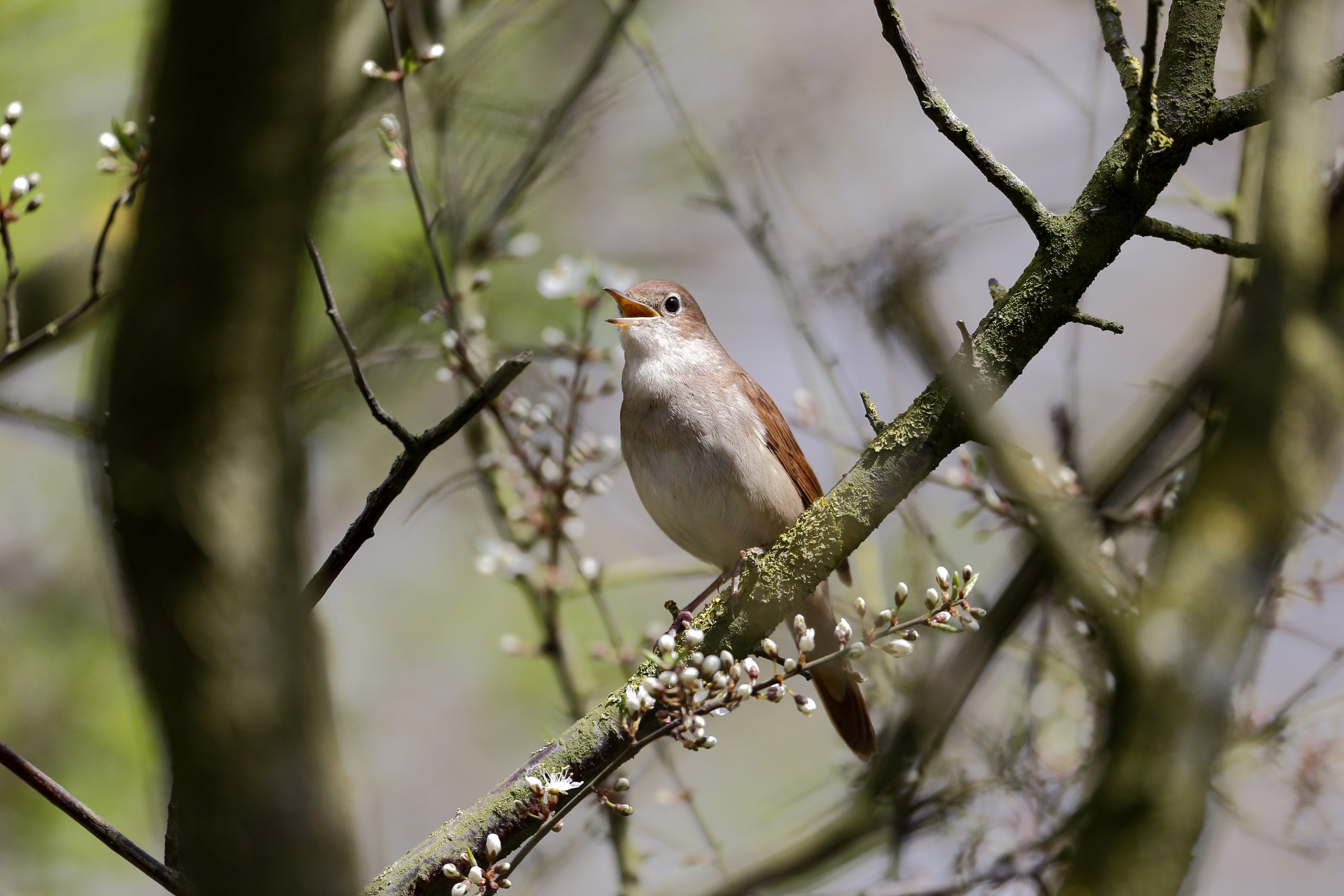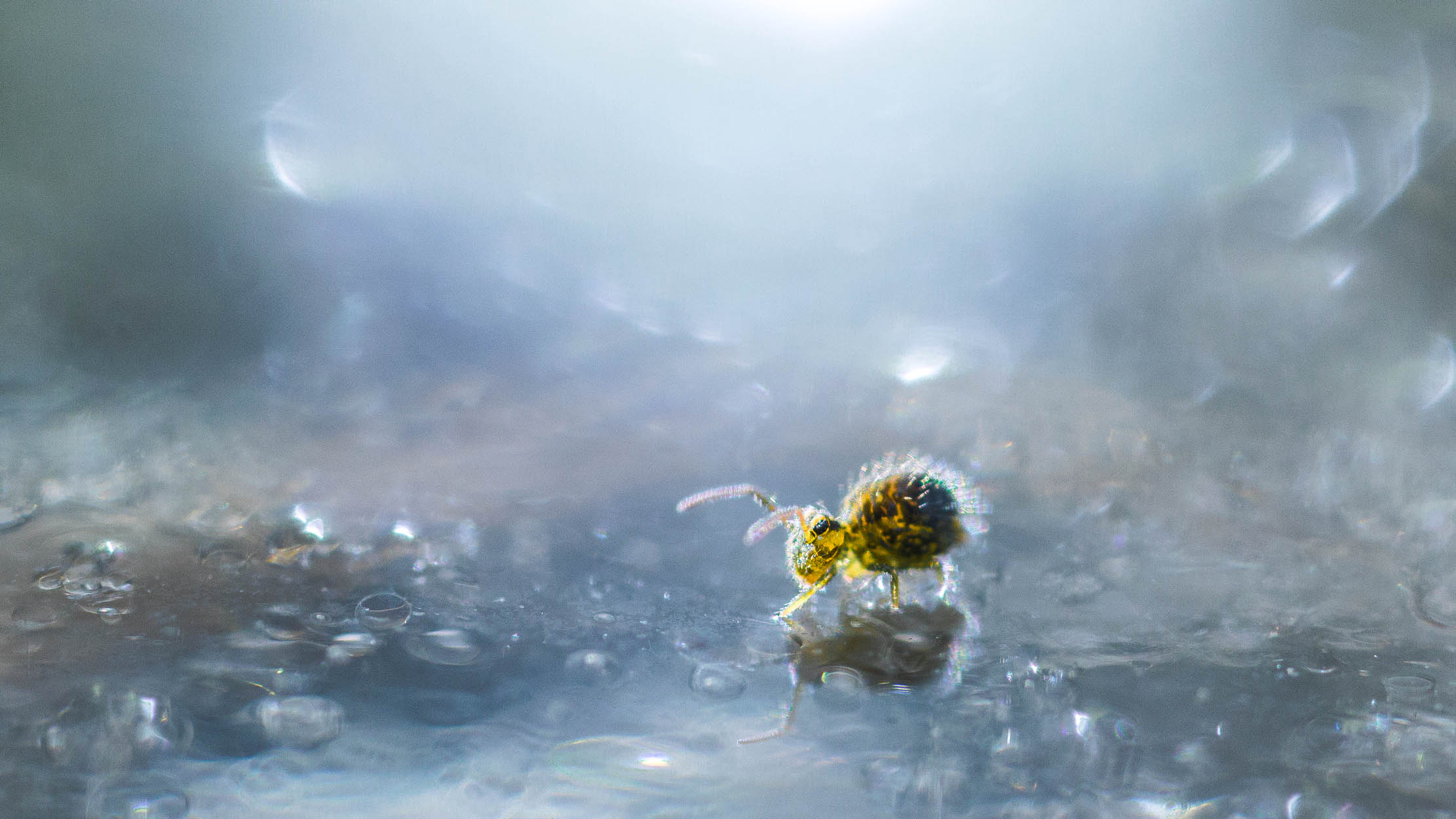The 8 best birdsongs you'll hear in Britain
Which eight birdsongs would you choose as the soundtrack if you were stranded on a desert island? David Tomlinson picks his top eight.

Music lovers struggle for hours to choose their eight favourite songs for the long-running BBC Radio 4 series Desert Island Discs. And it was no different for me when it came to decide on my eight favourite British birdsongs — but here they are.
1. The nightingale
The nightingale, the most famous of songsters, may be a predictable choice, but it is an astonishing singer, with a remarkable ability to combine power with melody and the softest of trills with the grandest of whistling crescendos. Part of the nightingale’s appeal is that, in England, we hear the song for such a brief period — late April through to the first week of June. Curiously, in France and Spain (where the bird is more numerous), it enjoys a longer song period.
Nightingales sing both day and night, but it is in the early hours of the morning that they are heard at their best, when there are no other competing sounds to distract. On a still night, you can easily hear one singing from a mile away. It is a simply wonderful sound.
2. The woodlark
As is the nightingale, the woodlark is somewhat plain in appearance and easily overlooked, but it has one of the most delightful songs. Its appeal to the human ear comes from the rise and fall in pitch and volume, the hesitant opening that accelerates into a most distinctive lullu-ing, which gives the bird its Latin name of Lullula arborea.
Woodlarks usually deliver their song from high in the sky and it’s often a challenge to spot the singer, even if your ears tell you it is somewhere above you. Although the bird will sing at any time of day, first light is a favoured time and it will also perform under the stars on the darkest of nights.
3. The blackbird
This is the one song that most of us don’t have to get out of bed to listen to. Hearing the first blackbird of the year — usually in the first week of February — is a reminder that winter is coming to its end, just as the short bursts of song uttered in July are a reminder that the days are shortening once again.
What makes the blackbird’s song so special is the richness of the notes, the clarity of the fluting and the slow tempo, as if each note was being chosen and uttered with particular care. We are fortunate that one of our more common birds is also one of the greatest singers.
Sign up for the Country Life Newsletter
Exquisite houses, the beauty of Nature, and how to get the most from your life, straight to your inbox.
3. The curlew
It isn’t only the marvellous bubbling song of the curlew that is so special, but also the delivery. The displaying cock flies quite slowly and deliberately, before suddenly climbing steeply on rapidly beating wings. Once he reaches the peak of his ascent, he hangs fluttering for a moment, before gliding slowly earthwards, all the time uttering the thrilling call. He then lands, holding his silver-lined wings above his back before repeating the same performance all over again.
Although curlews do nest on some lowland heaths, they are predominantly a moorland bird, so this glorious song is usually uttered to a background orchestra of red grouse, piping golden plover and trilling skylarks high overhead. It’s a sound that makes you feel good to be alive.
5. The blackcap
I had to have a warbler in my eight, but it was a hard choice between the shivering song of the wood warbler, a characteristic sound of the sessile oak woods of western Britain, and the richer, more varied song of the blackcap. I usually hear my first blackcap in the first week of April, when it’s easy to spot the singer as the trees are still bare of leaves. Later in the season, the bird becomes progressively harder to spot and there’s also the risk of confusion with the garden warbler.
My Collins Bird Guide describes the blackcap’s song as ‘one of the finest’: it is. The full song has a mixture of flute-like notes that give a slightly melancholy feel, but blackcaps will also entertain you with a sub-song that is full of mimicry, interspersed with cheerful squeaks and rasping sounds. They are keen singers, too, and can be heard until July.
6. The golden oriole
A bit of cheating here, for although the golden oriole is a common bird on the Continent, it’s one of our rarest nesting birds, with only a handful in poplar woods where Suffolk, Cambridgeshire and Norfolk meet.
The golden oriole’s exquisite, fluting song gains its great beauty from its perfect simplicity. It is loud and far carrying, but spotting the singer can be all but impossible. Orioles like to sing from the tops of trees, but do their utmost to stay out of sight. You can be tantalisingly close, but still unable to see the singer. When you do finally get a glimpse, the bird’s golden and black plumage is breathtaking and worth all the effort you put in trying to see it.
7. The turtle dove
The soft, gentle purring of the turtle dove is as much a sound of the English summer as the smack of leather on willow; indeed, an essential for the best village cricket ground is nesting turtle doves close by. Unlike most of the other birds I have chosen, turtle doves purr all summer, from the moment they arrive in late April or early May through to August.
They sound at their very best on sultry summer afternoons, when the heat is such that no other birds are singing. The purring is surprisingly powerful, for it is both deep and hard. It isn’t usually difficult to spot the singer, for he favours a lofty, but exposed song post, where he will sit for long periods, repeating his song over and again.
8. The nightjar
There’s nothing beautiful about the nightjar’s churring song, for it has an almost mechanical quality about it, rising and falling as the singer turns his head. However, no other song that I know has the same intensity when heard close to or is so evocative of summer nights on the Quantock Hills or the heaths and commons of southern England.
Nightjars win the prize for being one of the most persistent singers and it’s not unusual for a single burst of song to continue unbroken for many minutes. It’s usually the sudden arrival of the female that brings it to a halt with a rattling breakdown, followed by a series of wing claps and then the simple, excitable flight note.

14 adorable, breathtaking and funny pictures from the Close-Up Photographer of the Year 2020
From a friendly toad to an eel in a dark tropical sea to a group of funghi 'marching' along a
-
 What should 1.5 million new homes look like?
What should 1.5 million new homes look like?The King's recent visit to Nansledan with the Prime Minister gives us a clue as to Labour's plans, but what are the benefits of traditional architecture? And can they solve a housing crisis?
By Lucy Denton
-
 The battle of the bridge, Balloon Dogs and flat fish: Country Life Quiz of the Day, April 15, 2025
The battle of the bridge, Balloon Dogs and flat fish: Country Life Quiz of the Day, April 15, 2025Tuesday's quiz tests your knowledge on bridges, science, space, house prices and geography.
By James Fisher





